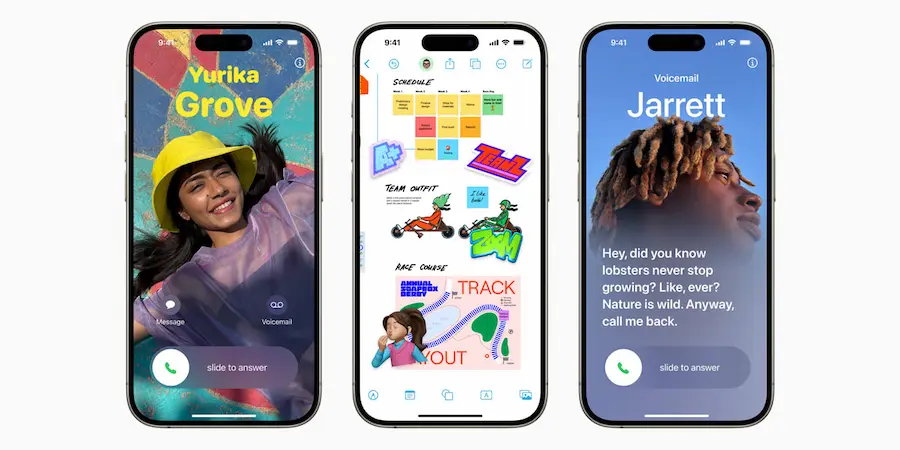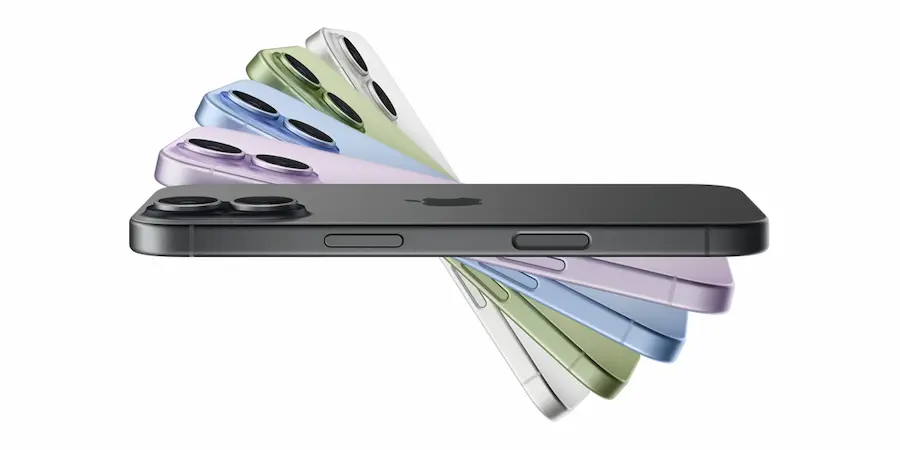Is it time to change iPhone or better to wait? If the iPhone 16 left many wanting more, the iPhone 17 arrives exactly where it was needed: display, camera, battery and charging make the leap we asked for, and they do it without raising the price. Also, the base model finally feels “current” without forcing you to look at the Pro, which is great news for those seeking a balance between features and cost.
Design and display: bigger, brighter and, finally, 120 Hz
Apple keeps the aluminum-and-glass formula but reinforces the front with Ceramic Shield 2, a glass that promises to be up to three times more resistant to scratches. The iPhone 17 also slims the bezels and stretches the panel to 6.3 inches, which translates into a body barely larger and slightly heavier than the iPhone 16, but with better screen utilization and slightly sharper edges. In colors, the palette changes: now there is Black, Lavender, Mist Blue, Sage and White.
The big news is the display: the iPhone 17 adopts a 1–120 Hz OLED with ProMotion and Always-On mode, while the iPhone 16 remains at 60 Hz without an always-on screen. The jump in smoothness is immediate, one of those you feel at the first scroll, like going from a mechanical hard drive to an SSD. Also, peak outdoor brightness soars to 3000 nits (versus 2000 nits on the iPhone 16), while keeping 1600 nits in HDR on both, so reading in sunlight stops being a challenge. Face ID remains the only biometric option.
The variable refresh rate that drops to 1 Hz allows saving power when you don’t touch the screen and, when needed, rise to 120 Hz for ultra-smooth animations, games and scrolling; an experience similar to what gamers know as VRR on G-Sync/FreeSync monitors, but applied to your pocket.
Performance and software: A19 more efficient and iOS 26 for both
Inside, the iPhone 17 debuts the A19 chip on 3 nm, focused on efficiency and sustained performance compared to the A18 in the iPhone 16. Both have 8 GB of RAM, but the base storage changes the game: the iPhone 17 starts at 256 GB, doubling the 128 GB base of the iPhone 16, and keeps the starting price at $799. If you usually record video or shoot at high resolution, you’ll appreciate that extra space from day one.
On the software side, there are no arbitrary exclusives: both run iOS 26, with the new visual language “Liquid Glass”, practical features like call filtering and live translation, and the Apple Intelligence suite with on-device AI. In other words, you get new iPhone and new features, but if you come from an iPhone 16 you’ll also get them on the same day the update launches.
In connectivity, both use USB-C with the 2.0 standard for data transfer, so if your workflow depends on higher speeds, upgrading to the Pro line will remain the alternative to consider.

Cameras and battery: sharper selfies, improved ultra wide and more hours of use
The rear keeps the 48 MP main sensor we already saw on the iPhone 16, but the big evolution is in the ultra wide: it’s now also 48 MP, which yields more detail and better macro shots without sacrificing field of view. On the front, the iPhone 17 rises to 18 MP with Center Stage, offering a wider frame, better stabilization in 4K HDR and Dual Capture to record with the front and rear cameras simultaneously; ideal for vloggers and creators who want content ready to publish without complicated edits.
In battery life, Apple rates up to 30 hours of video playback on the iPhone 17, versus 22 hours on the iPhone 16. The credit is shared between a higher-density battery and the greater efficiency of the A19. Charging speeds also improve: with the new 40 W adapter, the iPhone 17 reaches 50% in about 20 minutes; the iPhone 16, with 20 W, needs around half an hour for the same figure. Wirelessly, the iPhone 17 supports MagSafe and Qi2 up to 25 W, while the iPhone 16 keeps MagSafe at 25 W. That said, reverse wireless charging still doesn’t appear on either.
With this package, the iPhone 17 stops being “the entry iPhone” and stands as a full high-end model: a smooth display with Always-On, ridiculous outdoor brightness, improved selfies and ultra wide, longer-lasting battery and charging that finally keeps pace with 2025. The iPhone 16, meanwhile, looks older than it really is, especially because of the 60 Hz screen and the 12 MP ultra wide.
So, which one should you buy? For most people, the iPhone 17 covers all needs without forcing you to jump to the Pro. We’d only consider that extra if you value a dedicated telephoto lens or need transfer speeds higher than USB 2.0. The icing on the cake is that the starting price doesn’t rise and yet it doubles the base storage. In short: the upgrade that matters, and the one that makes the “standard” iPhone the easy recommendation again.

